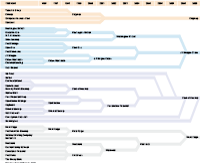Financing mergers and acquisitions
A variety of funds can be used to finance M&As. Cash represents a simple means of payment for M&As. The best type of financing depends on the financial structure of the two parties involved in the merger or acquisition and, in particular, the total value of their assets and liabilities. The most common way in which M&As are financed is through an exchange of stocks. In this case, the buying company exchanges its stock for shares of the one being sold. Another method is to take on the debt of the company being sold. This provides the buyer with a less expensive way to acquire assets, while reducing the risk for the company being sold.
The other two methods of financing mergers or acquisitions are the issuance of bonds or shares and bank loans. With the former, the buyer asks for financial support from the current shareholders or the general public. The latter can be a relatively expensive way of funding, given both the size of these deals (several millions or even billions) and the cost of the funding, namely the level of the agreed interest rate.
Activity 10 Mergers and the economic system
Read the article ‘Mergers are on the Rise: Is it good for the Economy? [Tip: hold Ctrl and click a link to open it in a new tab. (Hide tip)] ’ (The Yale Tribune, 2020).
Do you think the scope of mergers and the overall economic system coincide?
Discussion
The rising trend of M&As in the US (and worldwide) raises crucial questions in terms of their effect on the economic systems. While the benefits range from enhanced efficiency and growth, increasing debt and market power are examples of potential negative effects. The effects of M&As on the economy ultimately depends on considerations about companies’ motives and plans, as well as on the specific institutional setting in which they develop.

